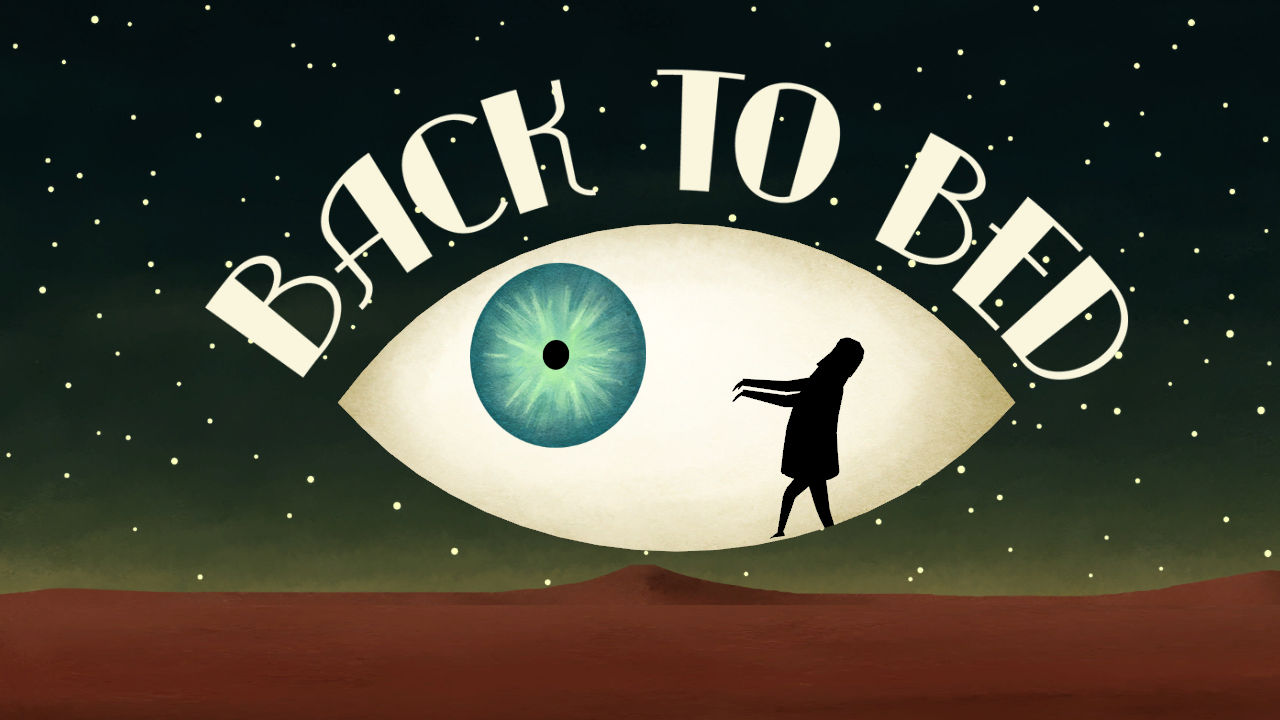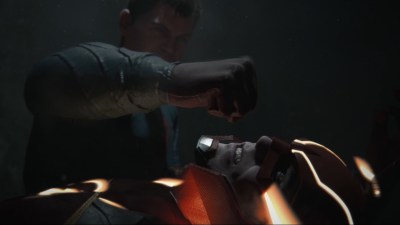Bedtime Digital Games’ Back to Bed hurt my brain in the best kind of way. The studio, created back in 2011 by a group of students in Denmark hoping to bulk up their CVs, has managed to create an addictive and bizarre puzzle game that is easy enough that it sinks its teeth into you and then hard enough to keep you locked in.
Back to Bed is an enjoyably eerie game, something you can tell right off the bat. The main menu features chimey and out of place music, a giant eye that follows your cursor’s every move and the shadows of a man and a dog walking occasionally through the whites of the eye to the loud sound of snoring. The same strange mood is carried on throughout the rest of the game through its visuals and dark tone - although it still manages to come off lighthearted.
The cutscenes are brilliant. At the start a series of pictures featuring a man named Bob and an odd dog-like figure named Subob are shown, but what makes them so interesting is the way information is hidden in plain sight. For instance in the first picture you are shown Bob standing in an office yawning. Clear enough, but inside a framed picture within that picture, big enough to spot and small enough to miss, are the words “Bob is a narcoleptic.”
But Bob is more of a somnambulist - a sleepwalker. Players assume the role of Subob inside a dreamlike world fulled with melted clocks, flying hats, colorful checkered floors and a copious amount of strangely placed eyes. (The development team apparently did a bit of research on how people see their dreams and decided to go with a surrealist approach for the visual designs.)
Subob is Bob’s spiritual guardian and is tasked to protect Bob while he clumsily sleepwalks into dangerous places. Bob only does two things: Walk in a straight line and turn clockwise. The player must use Subob to move objects like giant green apples (to block Bob’s path and make him turn), flattened fish (for bridging gaps), and teleporting mirrors to guide Bob to the safety of his bed.
If Bob hits an object, he’ll simply turn right and carry on in a straight line until he eventually hits something else or falls off the edge of the platform. There are also bizarre obstacles like angry clocks, hungry mouth traps, and giant lips that blow wind. Once Bob is safe in bed, chimes will play to the tune of Rock-a-bye baby and the words “Dream On” will appear, pushing players onto the next level.
Controlling Subob is simple, no matter what platform you’re playing on. On PC, you can use your mouse or a gamepad, both of which work well, and the game’s mobile versions support supports MFi gamepads as well as the expected touchscreen controls.
The sound in Back to Bed is unique and compelling. You’ll be hearing a lot of bizarre chimes, wind and crow cries while you play, but these sounds are subtle. A strange voice can occasionally be heard giving either useful advice such as “The stairs are not what they seem” (hinting at the fact that that stairs drawn onto walls can be climbed) or blurt out complete nonsense like “The apple now has narcolepsy.”
Back to Bed has everything a person could want from a “time-waster sort of game, and I say that in the best kind of way. It can be played for 5 minutes on a quick bus ride or 2 hours at home before bed and still be equally enjoyable. The visuals are crisp and quirky and really drive the whole ‘this guy is definitely sleeping’ idea home.
I would recommend Back to Bed to anyone who enjoys puzzles and often finds themselves with some time to kill. It’s certainly a more invigorating experience than mindlessly tapping on candy or slashing up fruit. Back to Bed is currently out on PC, android and iOS, and it’s definitely worth a look. If you’re curious, there is also playable web version (that is in no way indicative of the final product), which can be found here.


